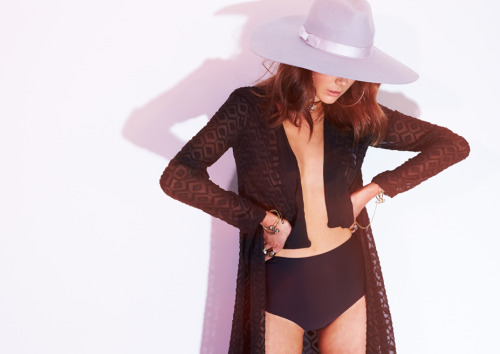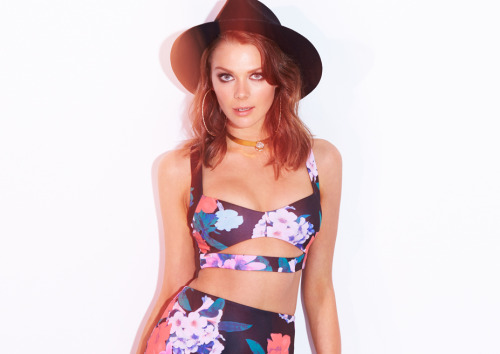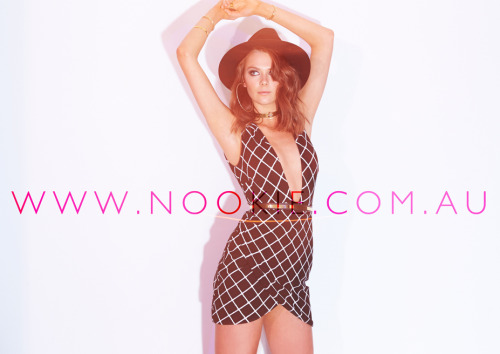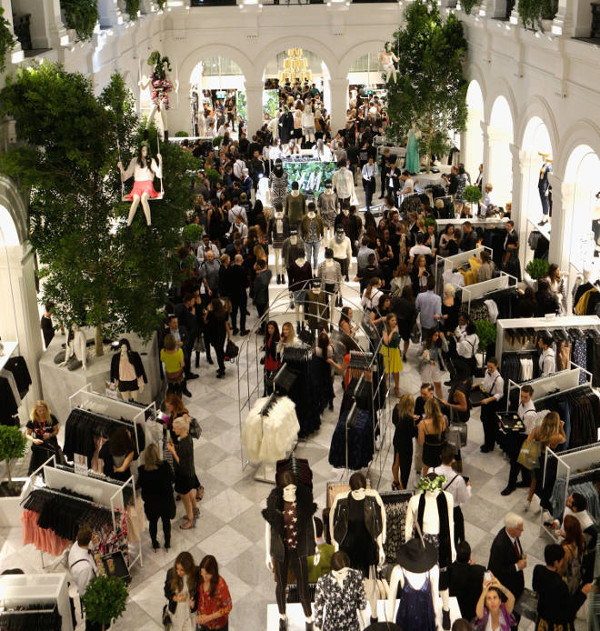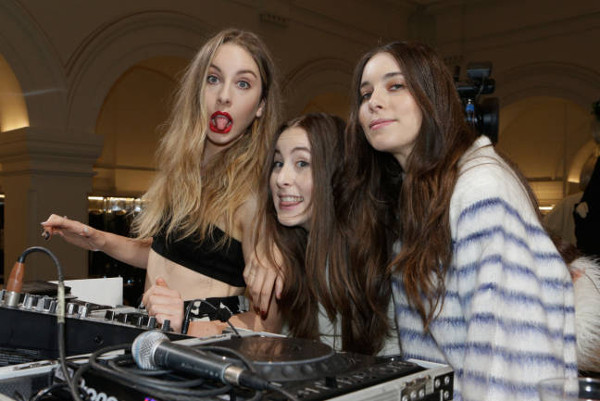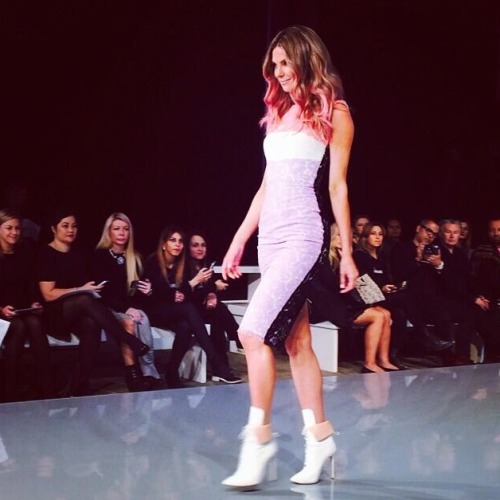#australian fashion
Gabriella Brooks photographed by Jordan Malane for Matteau
Simple, comfortable, tasteful. Products that are humble and without artifice. Less is more is the ethos that best describes Matteau, a brand founded by Peta Heinsen and Ilona Hamer. The cosmos of Matteau is so beautifully curated and epitomises tastefulness and dedication to perfecting their craft. I hope this brand is a delight for others to indulge in as much as it has been a treat for me.
Post link
Matteau
/matəʊ/
A portmanteau of ‘matt’ (not shiny) and ‘eau’, the French word for water.
Absolutely Poetic. Matteau thrives on effortlessness and a seamless connection to the natural world. This is one of the most organic brands of our time and perhaps of all time. It is a brand born from a fashion surrounded environment which prioritises wholesome philosophies about clothing and products.
Post link
Aways good to see people making a change!
Published 15 February 2015 12:17, Updated 17 February 2015 06:06 by BRW.com

Catherine Taouk says she’s learned the error of her ways and is now helping other organisations turn their supply chains ethical.
Fast fashion is on the way out. Consumers are demanding more ethical options and retailers need to invest in the process of investigating what’s occurring in their extended supply chain.
That’s according to Catherine Taouk, who spent 15 years working at her father’s teen fashion brand, Supre, which specialises in mass-produced, cheap fashion. Supre was sold to The Cotton On Group in October, 2013.
“Since leaving Supre, I’ve learned that there is another way to do business, and it’s not this ruthless, cut everyone down to make money style of business that’s operating in the fashion world today,” Taouk says.
“I just wish I’d have known what I know today about ethical fashion back in my unconscious Supre days, about the impact our decisions were having on others,” Taouk says.
“We had millions of those pink Supre polypropylene bags on order constantly, and if I think now of the dyes that went into those bags that were reusable, but not recyclable. But I’m making up for all of the things I never knew now.”
Taouk joined Supre in 1997 as part of the sales and development team during a financially tumultuous period in which the brand entered voluntary administration. She was an instrumental figure in the brand’s transformation as it soared into a new stage of the business cycle, before her parents sold to the Cotton On Group.
Supply chain
Since leaving Supre, Taouk has absorbed herself in Conscious Capitalismevents, saying she’s learned the error of her ways. She’s also absorbed herself in books and documentaries that highlight unethical dramas in the supply chain, admitting an animation depicting force-fed geese then plucked for their down for use in ski jackets reduced her to tears. Now, she wants to show others in the fashion world how to be more sustainable in their approach to running their business.
As the Australian dollar falls and the federal government signs a free-trade agreement phasing in zero tariff for imports from China, it’s time for the fashion industry to change, she says.
“When I look back on my Supre days, I realise that the most profitable years were when we had true purpose. During those periods when we weren’t always focused on the money and the bottom line, rents, wages, ratios and all those things that made the business not so much fun any more, we were in fact more profitable.”
Taouk, who was the CEO of boutique fashion brand Princess Polly for three months last year, has returned to running her business consultancy to help brands adopt more strategic, responsive strategies and services and embrace changes in the marketplace.
But she’s going one step further, teaming up with supply-chain compliance specialist Despina Karlsson to launch the “Raw to Store” program, helping fashion manufacturers banish unethical manufacturing procedures from their supply chain.
She’s knocking on the doors of Australian fashion houses and offering to conduct an internal appraisal to help uncover problems in the supply chain and find alternatives. The audit will be conducted in conjunction with the University of Sydney, which plugs manufacturing data into an integrated sustainability analysis system to uncover supply chain flaws.
Short-term expenses
Taouk realises it’s going to be a slow burn and take longer for big companies to look deeper into their supply chain.
“Long term, retailers can be more profitable by being open about their supply chain, even though in the short term, there will no doubt be a fear that products will cost more. But the products will last longer and consumers will vote with their wallet.”
Taouk hasn’t invited Supre to be audited by Raw to Store yet but intends to.
Cotton On Group chief financial officer Michael Hardwick says the acquisition of Supre has given the fashion brand access to the group’s extensive network of existing suppliers.
“As all Supre products are now manufactured through this network, the brand is subject to the group’s ethical-sourcing program.
“We have, and will continue to further develop our ethical-sourcing program to ensure it not only meets, but exceeds the expectations of our customers, our team and our partners,” he says.
Taouk’s timing as she moves toward ethical fashion advice is impeccable, say industry analysts.
In Melbourne, fashion business consultant Elizabeth Formosa has noticed an increasing number of clients pursue ethical fashion business models. The founder of Fashion Equipped says the desire among retailers to produce ethical fashion is higher than it’s ever been as environmental and social issues are top of mind for younger generations.
“Many fashion retailers are challenged by the information and resources available to them locally. Especially for designers who don’t have a great deal of capital in the start-up phase,” she says.
Industry shift
Ethical Clothing Australia agrees. The garment-factory fire in Bangladesh in 2012 in which more than 100 workers who stitched garments for Western retailers died has cast a dark shadow on the fashion industry. The fire was the catalyst for a much greater media and public dialogue about ethical manufacturing, according to spokeswoman Sigrid McCarthy.
“We definitely feel this tragic event prompted more people to start questioning the origins of their purchases, and demand greater transparency throughout supply chains,” McCarthy says.
“This big shift toward more ethically produced fashion is here to stay and the fashion industry is slowly but surely realising this. Just like the food industry, there’s growing demand for ethical products within the textile, clothing and footwear industry, and companies are being pressured to take responsibility for their actions.”
Government support is following, with the Victorian Labor government recently announcing $2 million in funding over the next two years to Ethical Clothing Australia’s accreditation program. It will work with local textile, clothing and footwear brands to ensure their Australian-based supply chains are transparent and legally compliant.
Procurement industry specialist Tania Seary, based in London, agrees consumers are starting to seek out more sustainable and ethical fashion brands and that procurement processes are more important than ever.
However, the founding chairman of The Faculty Management Consultants has also noticed many global apparel companies shift supply chains to riskier countries such as Bangladesh, Vietnam and Myanmar, where low labour costs and standards mean lower retail costs for price-conscious consumers.
“Fashion manufacturers have an insatiable appetite for cost reduction. I’ve heard many stories of factories in third world countries manufacturing for multiple brands that will insist on eye masks during a dangerous process for one brand, but not insist on safety equipment for the cheaper run to follow to make savings.
“Fashion retailers just can’t plead ignorance any more. Some of the issues in these economies around child labour and unsafe practices are having major ramifications on brands as consumers speak out against fast fashion houses and vote with their wallet,” Seary says.
Fashion manufacturers need to start realising it’s their responsibility to track and audit when happens within their extended supply chain to find out what’s really happening down the line, she says.
“It’s up to fashion manufacturers to physically walk the supply chain, ask the questions and do the checks. It’s about deciding what your company’s non-negotiables are and considering the ethics you want your business to integrate into your supply chain.”
Source: http://www.brw.com.au/p/marketing/supre_heir_bid_to_clean_up_fashion_1I3j2K5UZhflilGEkOA8OK
This makes me happy! Designed and made in Australia! We need more companies like this. www.nookie.com.au
Post link
Not super recent, but a good read.
Why I’m Not Excited About H&M’s Australian Launch
By Maddy Newman 7/4/14
As H&M opened the doors to its first Australian store in Melbourne over the weekend, fashion media and consumers alike were chomping at the bit for the retailer’s dirt-cheap ‘fast fashion’. Labelled by some as “the best thing to happen in Australia all year”, H&M’s 5000-square metre, three-level megastore in Melbourne’s GPO building houses over one million items of fashion, accessories and homewares, and all at prices so cheap that you needn’t think twice before buying.
And therein lies the problem. Well, one of the problems. H&M, with their $6.95 tanks and $12.95 jeans, encourage the kind of mindless consumerism that fast fashion thrives off — buy cheap and buy lots. The proliferation of wallet-friendly clothes and accessories that are ‘designer-inspired’ (a lovely little euphemism for ‘shameless rip-off’) has led many to confuse this increasing disposability of fashion with ‘democratisation’.
But with cheap prices, the victor isn’t really the consumer — it’s the fast fashion empires. Quantity over quality is a horribly unsustainable approach, but it’s the reason why H&M Chairman Stefan Persson is making mad bank (est. $32.8 billion), and also why most of our fast fashion purchases literally fall apart at the seams before even coming close to the 30th wear (the number recommended by sustainability journalist, Lucy Siegle).
Fast Fashion’s Hidden Costs
Fast fashion’s seductively low prices encourage us to buy things we don’t need (and sometimes don’t really want) with little regard for the enormous environmental and human costs of this rapid-fire supply chain that squeezes margin from those who are most vulnerable — garment workers in developing nations halfway across the world. H&M are estimated to produce 20-25% of their products in Bangladesh, making them the largest player in the country, and while they have gone some way to working towards a living wage (they aim to pay their workers a living wage by 2018), Labour Behind The Label — a UK-based collective of trade unions, charities and consumer organisations who work to support workers’ rights – argues that H&M’s projects “do not show evidence of delivering a living wage for workers any time soon” and that they have yet to put a figure on what the living wage actually is. H&M don’t own any of their own factories, and while they require their direct suppliers to sign a Code of Conduct and are subject to their Full Audit Program, they acknowledge that they don’t have direct contact with or influence over “second-tier” suppliers. It’s this lack of transparency in supply chains that leads to exploitation of workers, and in extreme cases, tragedies like Rana Plaza last April.
To be fair, though, as far as fast fashion empires go, H&M is not all evil. In fact, it was recently named as one of the ‘World’s Most Ethical Companies’ according to Ethisphere for its leadership in signing the Bangladeshi Accord on Fire and Building Safety, as well as its ‘Conscious Exclusive’ collection made from sustainable materials. It is also one of the world’s largest buyers of organic cotton. But these achievements are dwarfed by the sheer amount of resources used to make the estimated 550 million garments it sells each year.
Fast fashion is a huge drain on the environment — the textile industry is one of world’s largest users and polluters of water, thanks to the prevalence of cotton (a very thirsty plant grown in mostly dry regions like India, Mali and southern USA), as well as the many chemicals and dyes used in treating fabric. A single pair of jeans uses up to 5678 litres of water, and emits the same amount of carbon dioxide as driving 125km. No matter how many ‘conscious collections’ H&M produce, as long as they make more and more clothes, their impact on the environment is significant. As Siegle wrote in her analysis of H&M’s 2012 sustainability report, “Despite an understanding of all the pressures on Planet Earth sketched out in the report, there are no plans to scale back on ambition or indeed inventory.”
Besides the manufacturing costs of fast fashion, there is also the economic impact to local retailers and designers that will be felt as international fashion empires move in. Of course, healthy competition and a range of options is a great thing for the fashion customer, but Australian boutiques run the risk of being priced out of the market by H&M’s global buying power. Plus, the speed in which H&M can copy catwalk trends will drive sales away from Australian designers, many of whom are already flailing (think Ksubi, Lisa Ho, Kirrily Johnston and Alannah Hill to name a few).
While you may argue that there is no crossover between the H&M and high-end designer customer, the response to last week’s launch by the fashion media suggests otherwise. As I watched my Instagram feed swell with giddy images of the thousand-odd media, bloggers and celebrities that flocked to the Melbourne store for the big event, it was clear that the industry was drinking the H&M Kool Aid.
H&M are a well-oiled marketing machine, and the launch was major: 300 Sydney VIPs were flown down to Melbourne on a special flight, and indie-pop darlings Haim were brought in from Los Angeles to DJ the event. Luxury fashion titles like Vogue Australia, Elle and Harper’s Bazaar covered the event, despite H&M being far from the designer labels they usually endorse. On the eve of Australian Fashion Week, it was H&M — a Swedish fast fashion, mass-market retailer — that dominated the fashion pages, leaving local designers in the dark. Through a spectacular event and a generous media buy (just have a look at the banner ads bordering this Vogue gallery), H&M has managed to spin fashion credibility out of thin air.
As H&M continues to feed our clothing addiction with some of the lowest prices this country has ever seen, the fast fashion machine grows ever more powerful. The race to the bottom speeds up, and all the while the fashion media sips on champers and toasts the arrival of another mass-market giant. Instead of critically examining the company’s effect on the retail and fashion industry, we are left with images of ‘media personalities’ getting drunk on H&M’s bar tab. The publicists won this round — the complete narrative of H&M has been obscured by beautiful people in shiny clothes.
There’s no doubt the retailer, like Topshop and Zara before it, will find massive success in the Australian market — we do love a bargain. But if you find yourself in line this week at the Melbourne store, among the thousands of other shoppers, please take a moment to think about the true cost of your $12.95 skinny jeans.
-
Maddy Newman runs a fashion magazine for a major e-commerce company. Before that she produced a talk-back radio program for the over 65s. Consequently, she knows a lot about the Internet, shoes and Andre Rieu.
Read more at http://junkee.com/bursting-the-hm-bubble/32205#FMSwi3SwFtsRxMd2.99
Myer spring/summer 2015 launch.
Dress rehearsal, gift bags ready to go, and the beautiful Jennifer Hawkins wearing Alex Perry.
Post link
I was lucky enough to work at both days of the Myer spring summer 2015 fashion launch. There are so many beautiful designs coming into stores, lovely pastels and florals. My favourites were definitely Alex Perry (does he ever put a foot wrong?!) and By Johnny. Both were beautiful!!
Ethical Clothing Australia he lost its funding from the Australian Government. This organisation does great work to promote ethical fashion so please click on the link below and sign the letter to the government to bring back funding to ECA!
http://www.fairfashion.com.au/



